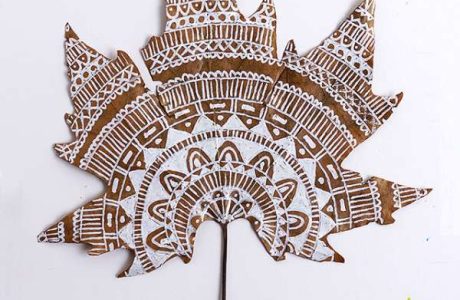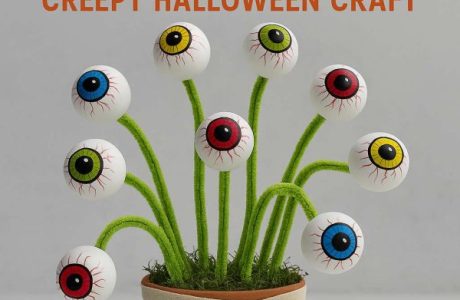
Creating a mini garden in an upcycled gin bottle is a unique and creative way to bring a touch of nature into your home or office space. With just a few simple materials and some creativity, you can transform an old gin bottle into a beautiful and functional planter that will brighten up any room.
To get started on your DIY gin bottle garden, you will need a few key materials. These include:
An empty gin bottle: It’s best to choose a bottle with a wide neck that will allow you to easily add your plants and other decorative elements.

Potting soil: You can purchase this from a garden store or make your own using a mixture of peat moss, vermiculite, and perlite.
Small plants or succulents: Choose plants that are suitable for indoor gardening and can thrive in a small space.
Pebbles or rocks: These will be used to create a drainage layer at the bottom of your bottle.
Decorative elements: Optional but recommended. This can include moss, figurines, colored sand, or any other decorative elements you like.
Once you have gathered your materials, it’s time to start creating your mini garden. Follow these steps:
Step 1: Clean and prepare the gin bottle

Before you start adding any plants or soil, make sure your gin bottle is thoroughly cleaned and dried. You can do this by soaking the bottle in warm, soapy water and scrubbing it clean with a bottle brush. Once it’s clean, let it dry completely before moving on to the next step.
Step 2: Add a drainage layer
To prevent your plants from getting waterlogged, you will need to create a drainage layer at the bottom of your gin bottle. To do this, add a layer of pebbles or rocks to the bottom of the bottle. This layer should be about 1-2 inches deep.
Step 3: Add potting soil
Once your drainage layer is in place, it’s time to add your potting soil. Fill the bottle with soil, leaving enough space at the top for your plants to fit. If you’re having trouble getting the soil into the bottle, try using a funnel or a long, narrow scoop.

Step 4: Add your plants
Now it’s time to add your plants! This can be a bit tricky, especially if the neck of your bottle is narrow. One option is to use a pair of chopsticks to carefully place your plants into the soil. You can also use a small spoon or a thin stick to create a hole in the soil and gently insert your plants.
When choosing your plants, it’s important to choose varieties that are suitable for indoor gardening and can thrive in a small space. Succulents are a popular choice for mini gardens because they are low-maintenance and can survive in dry conditions. Other good options include ferns, air plants, and herbs like basil or thyme.
Step 5: Add decorative elements
To add some visual interest to your mini garden, consider adding some decorative elements like moss, figurines, or colored sand. These can be placed on top of the soil or nestled among your plants to create a whimsical, fairy garden-like effect.
Step 6: Water your garden
Once your mini garden is complete, give it a light watering to help your plants settle in. Be careful not to overwater, as this can cause the soil to become waterlogged and harm your plants. It’s best to water your mini garden with a spray bottle or watering can with a narrow spout to avoid making a mess.
And there you have it – a beautiful, upcycled gin bottle garden that will bring a touch of nature into your home or office. This project is a great way to upcycle an old gin bottle and create a beautiful and unique piece of decor for your space. Plus, the low-maintenance nature of succulents makes this project ideal for those who are new to gardening or have limited space.
So what are the best plants for growing in a Terrarium?
Terrariums are a beautiful and low-maintenance way to bring greenery into your home. Succulents, in particular, are excellent plants to grow in terrariums due to their unique characteristics. Here are some of the best succulents to grow in terrariums and why:
Echeveria: Echeveria is a popular succulent known for its beautiful rosette shape and soft leaves. This plant comes in various colors, including shades of pink, green, and blue. Echeveria is a great choice for terrariums because it can tolerate low light and prefers well-draining soil.
Haworthia: Haworthia is a slow-growing succulent that thrives in bright, indirect light. This plant has a unique texture, with thick, fleshy leaves that form rosettes. Haworthia is an excellent choice for terrariums because it stays relatively small, making it a great option for small terrariums.
Sedum: Sedum is a diverse group of succulents that comes in many shapes, sizes, and colors. Sedum requires very little maintenance and thrives in bright light. This plant is also drought-tolerant, making it perfect for a terrarium environment.
Crassula: Crassula is a genus of succulent plants that comes in a variety of shapes and sizes. These plants prefer bright light and well-draining soil. Crassula is a great choice for terrariums because they can be pruned to maintain their shape and size.
Aloe: Aloe plants are known for their medicinal properties and can also be grown in terrariums. This plant prefers bright, indirect light and well-draining soil. Aloe plants are also drought-tolerant, making them an excellent choice for a terrarium environment.
When choosing succulents for your terrarium, it’s important to consider their size, light requirements, and water needs. You also want to ensure that the plants you choose complement each other in terms of color and texture. Once you’ve selected your plants, it’s time to plant them in your terrarium.
Getting plants into the neck of a bottle can be tricky, but it is doable with some patience and the right tools. One of the most common methods is using chopsticks or long tweezers to carefully place the plants in the soil. You may also need to use a funnel or small spoon to add soil to the bottom of the bottle before planting.
Start by adding a layer of pebbles or rocks to the bottom of the bottle to ensure proper drainage. Next, add a layer of activated charcoal to help absorb any excess moisture. Finally, add a layer of well-draining soil and carefully place your succulents in the soil. Use chopsticks or tweezers to adjust the position of the plants if necessary.
Once your plants are in place, water them lightly and place the lid on the bottle. It’s important to keep the terrarium in a bright, indirect light and avoid overwatering. With proper care, your succulent terrarium will thrive and provide a beautiful and unique addition to your home decor.



